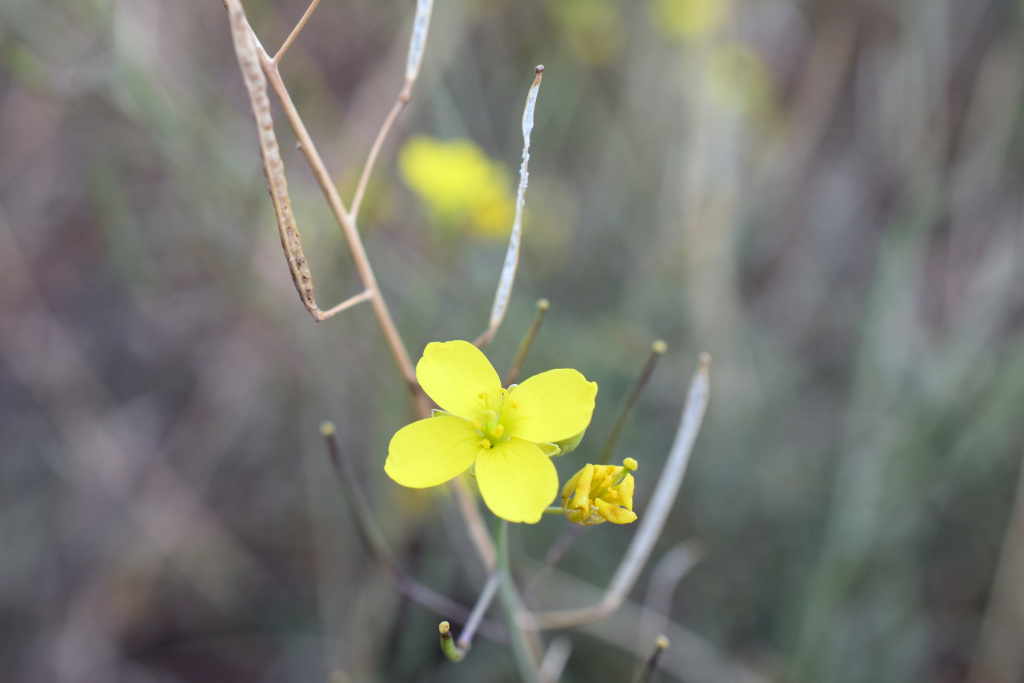Diplotaxis
Annual or perennial herbs, glabrous or sparsely covered with simple hairs. Leaves lobed to toothed, fetid when crushed. Inflorescence a branched raceme. Sepals somewhat spreading; petals clawed, yellow; stamens 6; ovary sessile or stalked. Fruit elongate (more than 3 times as long as broad); style short, stigma capitate, entire or bilobed; valves flattened, with 1 prominent vein; beak short; seeds numerous, ovoid, compressed, 2 rows per locule (at least in middle portion of fruit), beak seedless.
27 species from Europe and Mediterranean region; 2 species naturalised in Australia.
Diplotaxis is similar to Brassica, Sinapis and Hirschfeldia but the fruits always have 2 rows of seeds per locule and a single vein per valve. It differs from Eruca, which does have 2 rows of seeds per locule, in having fruits with a much less prominent beak.
Entwisle, T.J. (1996). Brassicaceae. In: Walsh, N.G.; Entwisle, T.J., Flora of Victoria Vol. 3, Dicotyledons Winteraceae to Myrtaceae, pp. 399–459. Inkata Press, Melbourne.
 Spinning
Spinning



